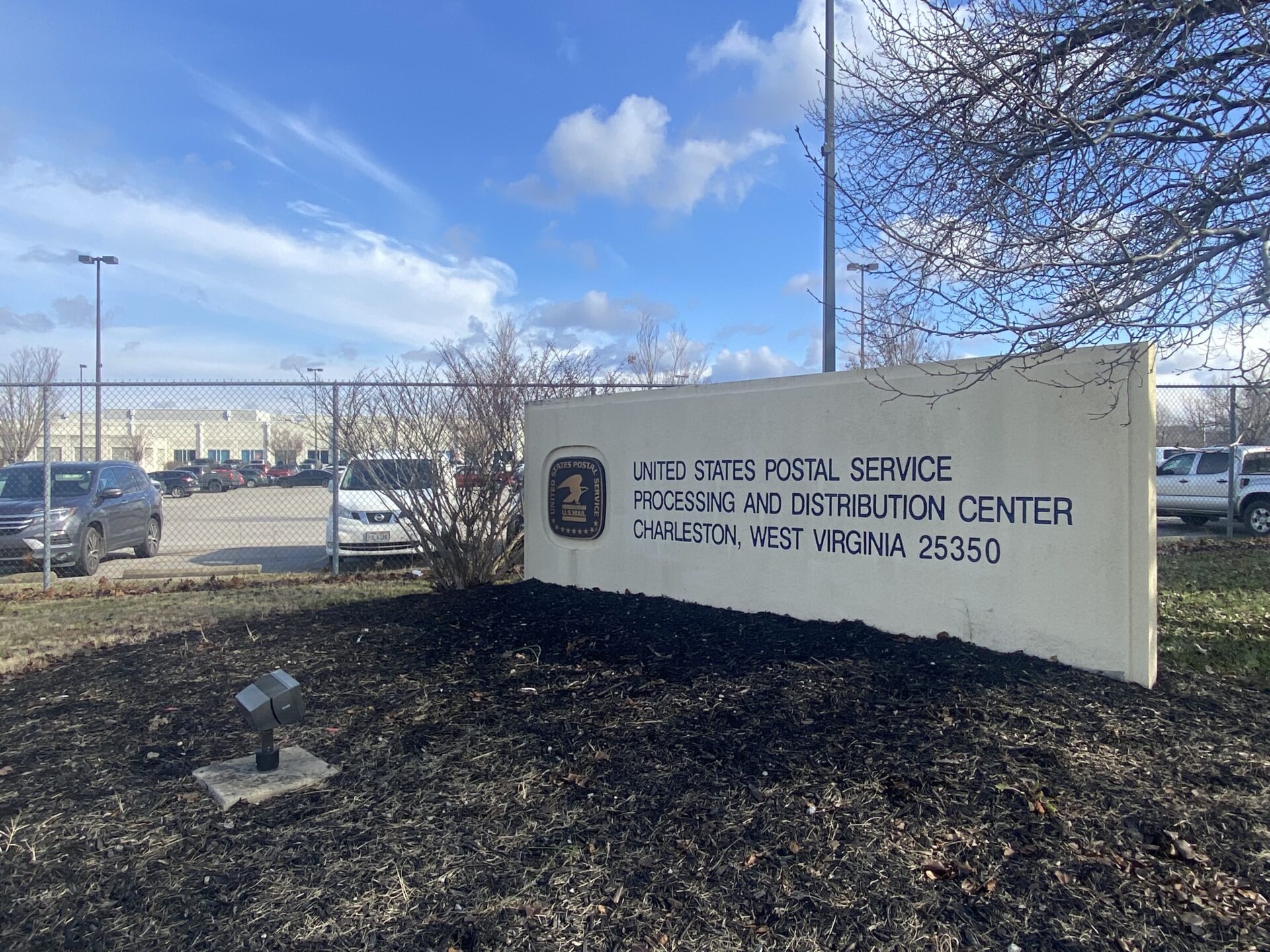As many as 90 postal workers could have their jobs affected by the downgrading of a West Virginia mail facility — a figure notably higher than union representatives previously anticipated.
The United States Postal Service (USPS) announced Tuesday that it would carry out plans to transfer outgoing mail processing from the Charleston Processing and Distribution Center to facilities in Pennsylvania.
The decision followed months of deliberation, as well as intense pushback from union workers and state officials concerned with the fate of West Virginia’s only full USPS processing center.
Tim Holstein, vice president of the Charleston-based American Postal Workers Union Local 133, has been an outspoken opponent of the downgrade.
He said union workers worried that more employees would be impacted than the USPS initially estimated. “Multiple members could possibly be relocated or moved out of state, possibly uprooting families and lives,” he told West Virginia Public Broadcasting in February.
When the final report came out on Tuesday, Holstein said workers’ fears were actualized.
In January, the USPS released an initial report that estimated changes to the facility would bring a net decrease of 24 postal workers.
At a first glance, that number is similar to the net decrease of 23 postal workers from the final plans released in April. But the final report also included a breakdown omitted from the initial report.
This laid bare the full extent of changes in store for workers, Holstein said.
Forty-one career employees — 28 career mail processing clerks and 13 career maintenance workers — could be transferred out of the Charleston facility.
In calculating a net decrease, the USPS offset this number with employees gained at the Pittsburgh-area facilities. But Holstein said transferring facilities is not a simple process, and that it might not be a viable option for some employees.
“It’s very difficult to uproot your family and your life, especially if you’ve lived in a particular area, and move to another place that has a higher cost of living,” he said.
The report also said that 25 postal support employees and 24 mail handler assistants could lose their positions. These are non-career roles, which lack the protections of career positions and can be terminated by the USPS.
Positions At Stake
| Position | Number Of Workers Affected | Eligible To Be Laid Off? |
|---|---|---|
| Mail Processing Clerks | 28 | No |
| Postal Support Employees | 25 | Yes |
| Mail Handler Assistants | 24 | Yes |
| Maintenance Workers | 13 | No |
Graphic Credit: Jack Walker/West Virginia Public Broadcasting
Together, that means a total of 90 career and non-career workers could be impacted through transfers and layoffs, respectively.
Holstein said that by providing just one number — the net decrease — the USPS misrepresented changes to the facility. The net figure was nearly four times lower than the cumulative number of positions impacted.
In an email to West Virginia Public Broadcasting, USPS Spokesperson Susan Wright did not address these claims.
However, she wrote that numbers included in the initial report were based on USPS estimates at the time.
Wright also wrote that “all bargaining employee reassignments will be made in accordance with the respective collective bargaining agreements.”
Still, Holstein said that the release of the final report reignited concerns over USPS transparency among workers.
While the net employee decrease was included prominently on the report’s third page, the full breakdown was included pages into the report, with terms and figures Holstein described as convoluted.
Hours after the report came out, Holstein said he had to pull out a pencil and perform arithmetic to fully grasp the number of positions affected by the downgrade.
“Once you get deeper into the math, you’re finding out that they’re using a net combined number that makes it more palatable for the public … in hopes that we’re not going to start digging into the numbers,” he said.
Union representatives were not alone in expressing disapproval of the final plans. Sen. Shelley Moore Capito, R-W.Va., released a statement Tuesday expressing concern over how many workers could be impacted.
“I am disappointed that USPS has decided to move forward with plans to shrink the role of the Charleston facility,” she said. “It is also very disappointing to see the number of jobs impacted by these changes has grown from USPS’s initial findings.”
While the USPS describes their plans as final, Holstein said he and fellow workers will continue to challenge them within the boundaries of their positions.
“The fight is not over,” he said. “Until we start to see a relocation or the non-career employees let go, we’re still on the fight. We’re still going to give it 100 percent.”
Photo Credit: Tim Holstein/American Postal Workers Union Local 133
